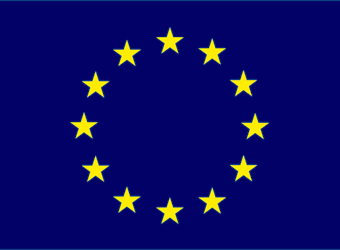
Deciding that it would be against the “public order” to grant the patent since it requires the destruction of an embryo to apply the method for preserving pluripotent stem cells in vitro without the cells losing the ability to differentiate subsequently. The court stated that the European Patent Convention prohibits patents that involve the use of human embryos, “for commercial or industrial purposes.”
The EPO did not, however, say the decision means human stem cell lines cannot be patented. But, the ruling leaves things unclear about any products based on banked embryonic stem cell lines that did not involve the destruction of an embryo as the starting point but that originate back to a destroyed embryo, are also unpatentable. Also, it is left unclear if cell lines based on fetal stem cells also would be considered contrary to public order.
At the time that Wisconsin Alumni Research Foundation’s Patent Application number 96903521.1 was filed in 1995, the only way of obtaining pluripotent stem cells was through the destruction of an embryo. Now, it is possible to isolate stem cells without destroying an embryo. Claim 1 of Application No. 96903521.1 reads:
. .”1. A cell culture comprising primate embryonic stem cells which (i) are capable of’ proliferation in vitro culture for over one year, (ii) maintain a karyotype in which all chromosomes normally characteristic of the primate species are present and are not noticeably altered through culture for over one year, (iii) maintain the potential to differentiate to derivatives of endoderm, mesoderm, and ectoderm tissues throughout the culture, and (iv) are prevented from differentiating when cultured on a fibroblast feeder layer.”
In addition, with research into induced pluripotent stem cells, in which adult somatic cells are transformed back into pluripotent cells, and also the use of therapeutic cloning, it is becoming possible to produce human embryonic stem cells through other routes.
Since some European countries, including the UK, allow patenting of products based on human embryonic stem cells, the decision will make it more complex to market any cell therapy products based on human embryonic stem cells. Also, it will not be possible to file for a single European patent for such products.
The Examining Division refused the application because, as regards the generation of human embryonic stem cell cultures, the use of human embryos as starting material was described in the application as originally filed as being indispensable. The description provided only one source of starting cells, namely a pre-implantation embryo. It was therefore irrelevant that the claimed subject-matter related to cell cultures and not to a method of production of said cultures.
In its decision, the Technical Board of Appeal posed the following questions to the Enlarged Board of Appeal:
Q1. Does Rule 23d(c) [now 28(c)] EPC apply to an application filed before the entry into force of the rule?
It has not been argued that Rule 28 (formerly 23d) EPC took away the possibility to patent anything which had previously been regarded as patentable under Article 53(a) EPC, nor that the Directive did so (see in this respect the reference in Art. 6(1) to what is contained in Article 53(a). … There is no indication that the commercial exploitation of human embryos was ever regarded as patentable.
In view of the above, the answer to referred Question 1 must be that Rule 28(c)(formerly 23d(c)) EPC applies to all pending applications, even those filed before the entry into force of the rule. As the Appellant itself agrees with this answer, as does the President of the EPO and the vast majority of the amicus curiae briefs, nothing more need be said.
Q2. If the answer to question 1 is yes, does Rule 23d(c) [now 28(c)j EPC forbid the patenting of claims directed to products (here: human embryonic stem cell cultures) which – as described in the application — at the filing date could be prepared exclusively by a ‘method which necessarily involved the destruction of the human embryos from which the said products are derived, if the said method is not part of the claims?
Rule 28 (formerly 23d) EPC provides, inter alia: “Under Article 53(a), European patents shall not be granted in respect of biotechnological inventions which, in particular, concern … (c) uses of human embryos for industrial or commercial purposes”. The question thus is whether the present invention falls under the prohibition of this provision:
- Inventions shall be considered unpatentable where their commercial exploitation would be contrary to public policy or morality; however, exploitation shall not be deemed contrary merely because it is prohibited by law or regulation.
- On the basis of paragraph 1, the following shall be considered unpatentable: a). . . b). . . c) methods in which human embryos are used; d) . . .
In a case like the present one, where the teaching to obtain the embryonic human stem cells claimed is confined to the use (involving their destruction) of human embryos, the argument raised by the Appellant, namely that the exclusion from patentability would go much too far if one would consider all the steps preceding an invention for the purposes of Rule 28(c) (formerly 23d(c)) EPC, is not relevant.
A claimed new and inventive product must first be made before it can be used. Such making is the ordinary way commercially to exploit the claimed invention and falls within the monopoly granted, as someone having a patent application with a claim directed to this product has on the grant of the patent the right to exclude others from making or using such product. Making the claimed product remains commercial or industrial exploitation of the invention even where there is an intention to use that product for further research. On the facts which this Board must assume in answering the referred question 2, making the claimed product involves the destruction of human embryos’. This use involving destruction is thus an integral and essential part of the industrial or commercial exploitation of the claimed invention, and thus violates the prohibition of Rule 28(c) (formerly 23d(c)) EPC.
In view of this result, it is not necessary nor indeed appropriate to discuss further arguments and points of view put forward in these proceedings such as whether the standard of ordre public or morality should be a European one or not, whether it matters if research in certain European countries involving the destruction of human embryos to obtain stem cells is permitted, whether the benefits of the invention for humanity should be balanced against the prejudice to the embryo, or what the point in time is to assess ordre public or morality under Article 53a EPC.
Q3. If the answer to question 1 or 2 is no, does Article 53(a) EPC forbid patenting such claims?
Question 3 does not need answering, since the Enlarged Board has held that Rule 28(c) (formerly 23d(c)) EPC is applicable, that it is within the scope of Article 53(a) EPC, and that it forbids the patenting of products which at the filing date could be prepared exclusively by a. method necessarily involving the destruction of human embryos from which said products are derived, so that the answers to questions 1 and 2 is yes.
Q4. .In the context of questions 2 and 3, is it of relevance that after the filing date the same products could be obtained without having to recur to a method necessarily involving the destruction of human embryos (here: e.g. derivation from available human embryonic cell lines)?
When assessing whether a claim contravenes Rule 28(c) (formerly 23d(c)) EPC, technical developments which became publicly available only after the filing date cannot be taken into consideration. It cannot be relevant whether later either the applicant himself or others, made something further available that would then have allowed the product to be made in an innocuous manner. Similarly to the case of an invention which is insufficiently described in the application as filed to be carried out, lack of any disclosure in the application as filed putting the skilled person in possession of a way to carry out the invention complying with Rule 28(c) (formerly 23d(c)) EPC cannot be cured by the occurrence of subsequent technical developments. Any other conclusion would lead to legal uncertainty, and risk being to the detriment of any third party who later provided an innocuous way to carry out the invention.
Thus question 4 must be answered to the effect that it is not of relevance that after the filing date the same products could be obtained without having to recur to a method necessarily involving the destruction of human embryos.
In view of the questions referred, this decision is not concerned with the patentability in general of inventions relating to human stem cells or human stem cell cultures. It holds unpatentable inventions concerning products (here: human stem cell cultures) which can only be obtained by the use involving their destruction of human embryos.
This decision leaves open the question of patentability of stem cell technology that makes use of human embryos but does not necessarily involve the destruction of embryos.

 The European Commission has published its
The European Commission has published its